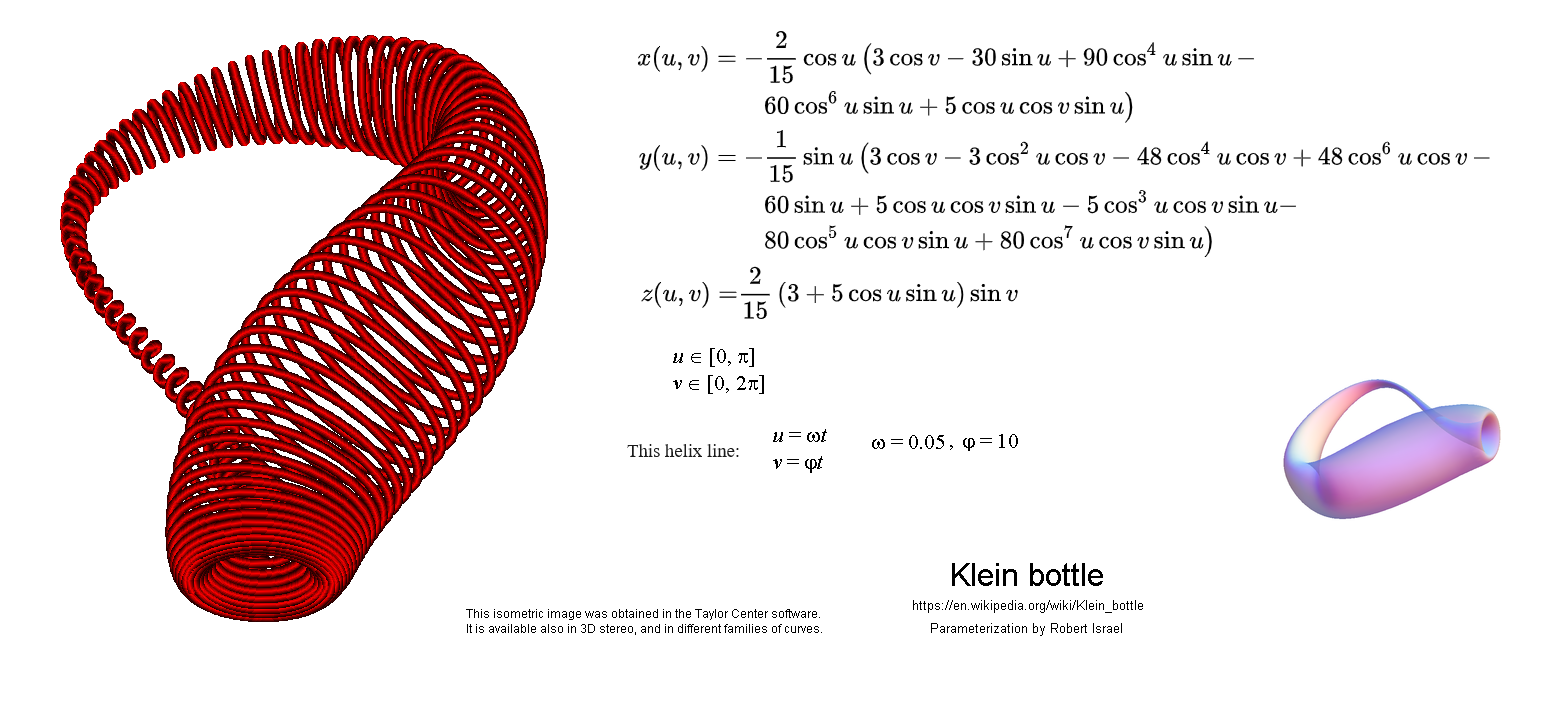The Workshop
on applications of the Taylor Center software
for teaching via real-time simulations
As explained in other sections,
the Taylor Center software has a great
potential as a tool of computer assisted teaching for…
- For applied ODEs. It motivates students due to its illustrative and entertaining real-time animation in 2D and 3D stereo (using Red/Blue glasses). In particular...
- For teaching the celestial and general mechanics and physics; and...
- For plotting phase portraits and illustration of sophisticated curves outlining surfaces in analytical1) geometry.
Due to its ability to achieve the highest accuracy of integration (with 64 bit
mantissa of the real type extended), this software is also indispensable
for numeric experiments and obtaining solutions of some challenging problems
when other types of software fail – and integration of such challenging
problems was the only goal at the beginning of this project in 2001.
Later, however, to demonstrate the power and convenience of this software, I also started collecting illustrious problems in various branches of applied ODEs. I gathered all such problems into the files coming with the installation of the software. Users can run them either via the Demo item of the main menu or by loading them from the list of script files. At the moment, this file contains about 200 names of such simulations systemized by categories, 34 of which are accessible from the Demo menu.
Moreover, under some names in simulations there are in fact several hundreds of the cases in particular studies such as the Choreographies, Periodic orbits, and the Free Fall periodic orbits in the Three body problem. All such simulations represent the recent advances in Celestial mechanics obtained thanks to contacts with the researches in the respective areas.
This way, the collection grew into a vast list of simulations in various fields though without respective textbooks – because then the goal was only to gather a rich collection of demonstrations of the power of the software, rather than any pedagogical goals.
However, the very method of simulations of the physical processes with the real-time bullet motion along trajectories suggested an idea to utilize this software also as a generator of simulations and as a virtual laboratory (Exploratorium) for studying and teaching applied mathematics. In particular, the Phase portraits presented a great scientific and teaching value in itself.
That is how an idea emerged to employ this software as a generator of simulations for computer assisted teaching – and generally for simulating processes and examples considered in textbooks or research articles.
In the moment, the Exploratorium includes only a few topics limited by my own research and expertise. Every topic in the Exploratorium includes a detailed theory in a form of a didactic text, or an article, containing directives what to watch in the respective simulations. At that, every such didactic text is accompanied with files containing the list of the respective simulations. When readers encounter the names of simulations in the text, there is a mechanism allowing to run the necessary simulation just by selecting its name.
As to the rest of about 200 simulations, I compiled a list of suggestions and ideas for writing the respective didactic texts.
However,
it's possible to annotate with such simulations any traditional textbook on
applied ODEs for Physics, Mechanics, and especially Celestial mechanics, whose
graphics obviously contains only still images. As a result of such addition,
the textbook becomes animated with live real-time simulation of motion along
the trajectories of the solution.
With that in mind, the teachers and researchers in the above-mentioned fields
are invited to participate in this Workshop functioning mostly remotely via the
Internet tools such as email, Skype or Zoom conferences, or telephone.
There are at least three forms of participation and collaboration:
- For those wishing to install the software at their own PC in order to experiment with the particular features for advancing their challenging numeric problems.
- For those not wishing to run this software on their own, but ready to share their challenging problems with me (see the contact) so that I try to solve them using this software and to share the results with the authors.
- For authors of the existing or pre-planned text- or task-books on applied ODEs wishing to enrich their books by adding a set of dynamic samples in 2D and 3D (played via this software), and to illustrate every example and problem in their textbook, therefore making the textbook more attractive and catching. Please send me your suggestions.
The necessary consultations and exchanges will take place on a regular basis via the usual means of communication. We will accumulate the problems successfully solved with this software into a special section at this site, and plan them for discussions at our workshops. If this activity grows, in the future we may wish to meet physically for such a workshop either as a small independent event, or in a frame of some bigger mathematical events.
The already existing annotated list of over 200 samples collected randomly during the years of developing of this project, gives an idea of how a much larger library may be gathered with collective efforts in order to establish an always growing Exploratorium of teaching simulations in applied mathematics.
Welcome to the Workshop!
Alexander
Gofen
The Taylor Center
2017- 2024
1) We are speaking about a trivial case where the software is used merely for plotting parametric curves (no ODEs, just auxiliary variables) – see Demo/Klein bottle below and file Samples for description of over 112 non-trivial and sophisticated samples coming with this software. Parametric curves may be used to outline surfaces: either via a helix line (below), or via a sine wave like MobiusSineOutline.scr in Samples.
